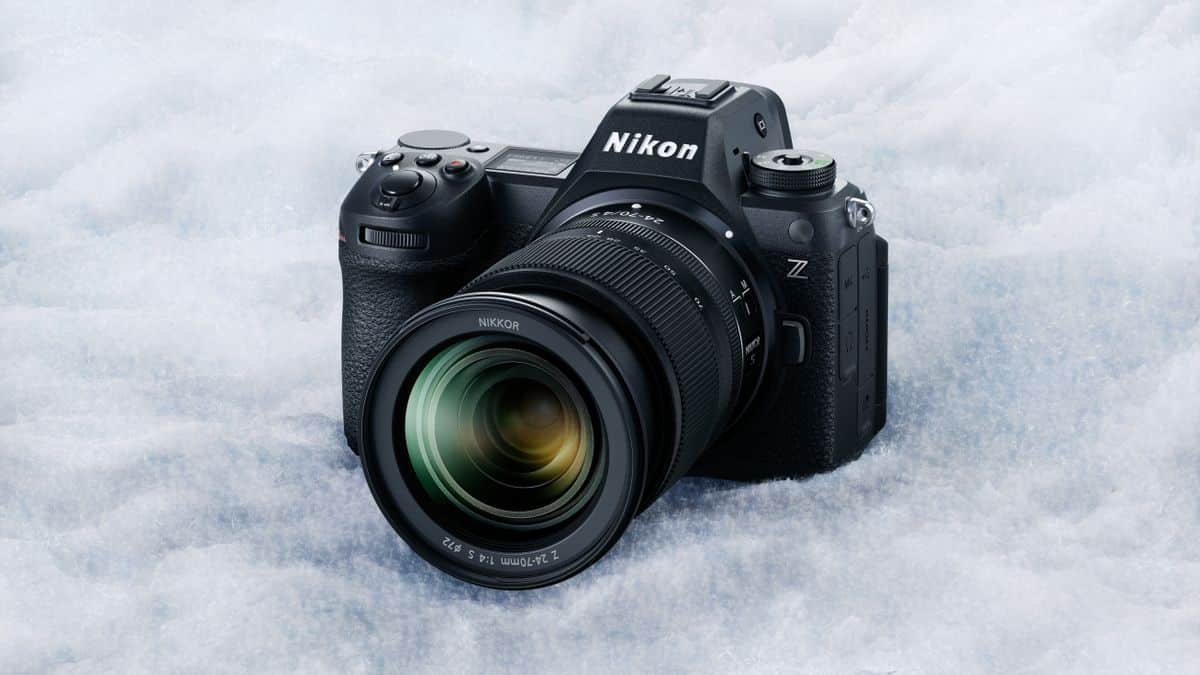Nikon has finally unveiled the Nikon Z6 III, complete with the world’s first partially stacked sensor. This new model not only builds on the Z6 and Z6 II but sets the pace for Nikon’s future in hybrid video and content creation.
Unveiling the Nikon Z6 III marks a significant step forward from its predecessors, the Z6 and Z6 II. This latest addition to the Z6 series, which began in 2018, showcases Nikon’s ambitious vision for the future of mirrorless cameras. One of the standout features of the Z6 III is its brand new ‘partially stacked’ sensor, maintaining a resolution of 24.5 megapixels but offering much faster readout speeds. This allows for an electronic shutter that shoots up to 120 frames per second in DX crop mode and 60fps in full FX mode. Nikon has also upped the maximum shutter speed to 1/16,000 sec, although it falls short of the 1/32,000 sec speeds seen in the Z8 and Z9 models.
Nikon’s new Z6 III also comes equipped with in-body image stabilization (IBIS) that offers up to 8.0 stops of stabilization, a significant improvement from the 5.0 stops in the Z6 II. This enhanced IBIS pivots around the active focus point to ensure better subject sharpness and supports a high-resolution mode that stitches together multiple images for a stunning 96 MP output.
Autofocus capabilities are another area of improvement. With 299 autofocus points distributed across the sensor, up from 273 in the Z6 II, the Z6 III can function in lighting conditions as low as -10EV, making it a solid choice for astrophotography. Video recording options also impress, with up to 6K60p RAW recording internally, and various recording options such as 5.4K/60P and 4K60p video from oversampled 6K, as well as full HD recording up to 240p for 10x slow-motion footage.
The Z6 III features a vari-angle touchscreen rear LCD with a resolution of 2.1 million dots, the highest of any Nikon camera to date, and a new electronic viewfinder (EVF) that offers a resolution of 5.76Mp and supports the DCI-P3 color gamut for more lifelike colors. This EVF is also notably bright at 4000 nits, improving usability in bright conditions.
Additional features include two memory card slots—one CFexpress Type B and one SDXC UHS-II slot—for ample storage and flexible file management. Connectivity options are robust, featuring a mic, headphones, USB-C, HDMI, and an accessory terminal. The camera is also slightly larger and heavier than its predecessors, coming in at 750g, which may affect compatibility with some custom-fit accessories like L-brackets and older battery grips. However, it does launch with a new, specially developed MB-N14 battery grip for extended shooting and vertical grip.
Under the hood, the Nikon Z6 III is powered by the EXPEED 7 processor, offering advanced autofocus capabilities and subject-detection modes for people, animals, and vehicles. Nikon claims that the autofocus performance is on par with the Z8 and Z9 models, and during testing, the camera successfully tracked fast-moving subjects, such as basketball players. The EVF mirrors the rear LCD, providing essential overlays like histograms and grid displays for a comprehensive shooting experience.
The Nikon Z6 III is now available for preorder and is expected to start shipping in July. The body only is priced at $2,499 / £2,699 / AU$4,499, with the option to purchase it in a kit with the Nikon Z 24-70mm f/4 S lens for $3,099 / £3,249 / AU$5,499. With its groundbreaking sensor and an array of advanced features, the Z6 III is poised to be a game-changer for Nikon enthusiasts and professional content creators alike.

